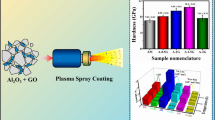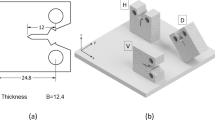Abstract
The paper addresses the relationship between microstructure, texture, and mechanical properties of rolled magnesium sheets. The effect of rolling temperature and alloying elements on texture development and mechanical properties is demonstrated. Special focus is paid to the potential of rare earth elements to modify the anisotropic behavior and to weaken the strong basal texture of magnesium sheets. Alloy design that considers these possibilities together with appropriate selection of process parameters show the road to magnesium sheets with improved forming properties.
Similar content being viewed by others
References
S.R. Agnew, Magnesium Technology 2002, ed. Howard Kaplan (Warrendale, PA: TMS, 2002), pp. 169–174.
R. Cotam et al., Materials Science and Engineering A, 485 (2008), pp. 375–382.
L.W.F. Mackenzie and M.O. Pekguleryuz, “The Recrystallization and Texture of Magnesium-Zinc-Cerium Alloys,” Scripta Mater., 59 (2008), pp. 665–668.
J. Hadorn et al., “Influence of Rare Earth Elements on the Microstructure and Texture Development during Rolling of Magnesium Alloy Sheets” (Paper presented at the TMS 2009 Annual Meeting & Exhibition, San Francisco, CA, 14–18 February 2009).
J. Wendt et al., Magnesium Technology 2009, ed. S. Agnew et al. (Warrendale, PA: TMS, 2009), pp. 289–294.
J. Bohlen et al., Acta Materialia, 55 (2007), pp. 2101–2112.
C.E. Dreyer, R.H. Wagoner, and S.R. Agnew, J. Mater. Process. Tech. (submitted for publication 2008).
M.R. Barnett, M.D. Nave, and C.J. Bettles, Materials Science and Engineering A, 485 (2004), pp. 205–211.
K. Hantzsche et al., Proceedings of the Light Metals Technology Conference, ed. K. Sadayappan and M. Sahoo (Saint-Sauveur, Quebec: LMT, 2007), pp. 189–200.
H. Mecking, Texture and Anisotropy, ed. U.F. Kocks, C.N. Tomé, and H.R. Wenk (New York: Cambridge University Press, 1998), pp. 2–4.
V. Kree et al., Practical Metallography, 41/5 (2004), pp. 233–246.
A. Styczynski et al., Scripta Mater., 50 (2004), pp. 943–947.
S.E. Ion, F.J. Humphreys, and S.H. White, Acta Metall., 30 (1982), pp. 1909–1919.
N. Stanford and M. Barnett, Scripta Materialia, 58 (2008), pp. 179–182.
J.W. Senn and S.R. Agnew, Magnesium Technology 2008, ed. M. Pekguleryuz et al. (Warrendale, PA: TMS, 2008), pp. 153–158.
Author information
Authors and Affiliations
Corresponding author
Rights and permissions
About this article
Cite this article
Hantzsche, K., Wendt, J., Kainer, K.U. et al. Mg sheet: the effect of process parameters and alloy composition on texture and mechanical properties. JOM 61, 38–42 (2009). https://doi.org/10.1007/s11837-009-0119-2
Published:
Issue Date:
DOI: https://doi.org/10.1007/s11837-009-0119-2




